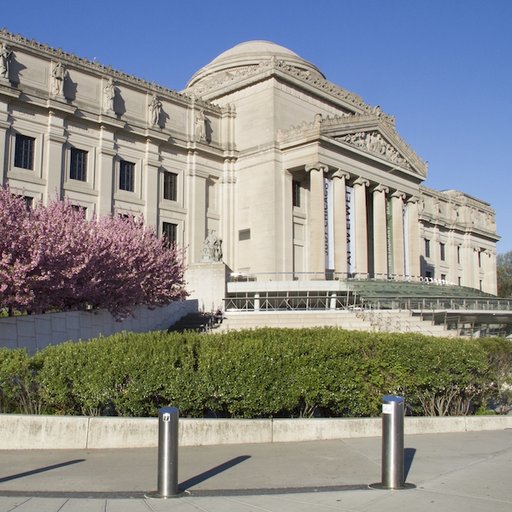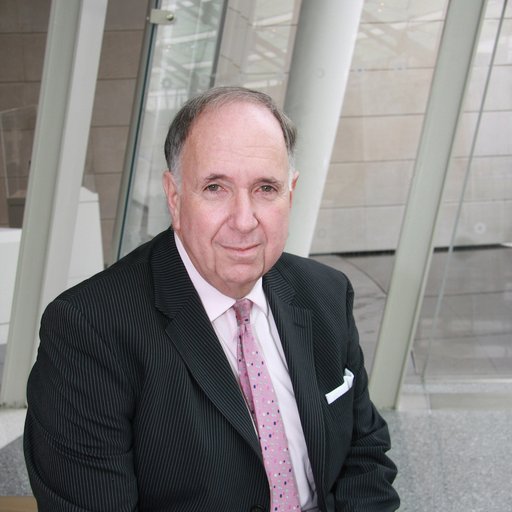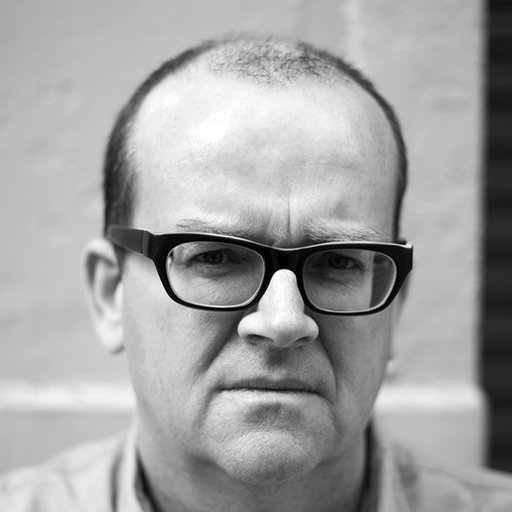In his 1958 essay “The Legacy of Jackson Pollock,” the artist Allan Kaprow assessed Pollock’s impact: “He created some magnificent paintings. But he also destroyed painting.” For Kaprow the drip painter marked a logical endpoint, after which artists had to settle for making “near-paintings” or renounce the medium altogether in favor of “the space and objects of our everyday life.”
For the author Morgan Falconer, however, Pollock is just the beginning. In his new book Painting Beyond Pollock (Phaidon, April 20), Falconer—a critic, journalist and art historian who teaches at the Sotheby’s Institute of Art in New York—stitches together a comprehensive, cohesive picture of postwar painting. He spoke to Artspace about the challenge of defining the painters who matter, the changing role of the critic, and the state of painting today.
To start off, I have to ask you: why Pollock? Why not painting beyond Newman? Or Rothko? Or de Kooning?
In certain accounts of modern painting, Pollock is seen as a culmination. He was certainly seen by many artists at the time, people like Allan Kaprow, as having finished painting—as having brought it to a kind of culmination beyond which it couldn’t go any further. Kaprow thought painting was over after Pollock, that he’d done the most with it that could be done.
Pollock’s just such a fascinating figure, because he’s peculiar; you can’t lift the visual style of Pollock without simply appropriating him. Artists could borrow stylistic qualities from Picasso, but it’s not possible with Pollock. Nevertheless, Pollock became hugely influential in all sorts of diverse ways—not just in painting, but in performance art. He seemed like an interesting place to start, to simply say, against Kaprow’s opinion, that painting continued.
How did you balance a chronological narrative with the need to account for the various competing groups and factions of postwar painting?
It’s difficult. I tried to split the history into a series of scenes and styles, which unfolded over a period of years. I tried to marry both things, to pursue theme but also to sustain a readable chronology. It’s not always easy to do that. For instance, with geometric abstraction, that’s very much a declining tradition in the postwar period and it’s something that splinters into different directions, and also which has arguably some recurrences in the 1980s. Even today, a painter like Tomma Abts owes a huge debt to geometric abstraction. Yet, it doesn’t quite make sense to put some of these later painters in a chapter on geometric abstraction. They arrive so much after the fact that it makes more sense, chronologically, to treat them in a different way.
One thing you did was to split the narrative of abstract painting into two parts, with 1970 as a watershed year.
The story of abstract painting after Pollock—despite the feeling many people have that Pollock marked an endpoint—is very rich and very long. It was necessary, in practical terms, to split the history up. I thought it made sense to break it after conceptual painting, because there just seems to be a shift in tone and attitude between the conceptual painting of the late '60s and early '70s and the very retrospective feel of painting after 1980.
In that second part I start looking at artists like Elizabeth Murray—her influences go back many years. There’s a retrospective feel, looking at artists like Picasso and Cezanne. Following that period there’s more appropriation in painting, more of a feeling that modernism has ended. Whereas in the conceptual painting of the '60s, there’s more a sense of analyzing modernism or reflecting on its essentials—so the story of conceptual painting belongs with modernism.
What comes after is postmodernism—Peter Halley is looking at geometric abstraction with very new eyes. Similarly, artists like Wade Guyton are looking back at Barnett Newman with feet in the digital era, an era which is very different from the one that Newman emerged out of. It would make no sense to put Wade Guyton in the same chapter as Barnett Newman.
You also say, in the book, that Pop art in particular marked a kind of turning point.
I think Pop has been digested into the DNA of painting now, just as it’s been digested into the DNA of most serious artists. They might choose to contest it or to turn away from it, but it’s part of the landscape. Abstract painting, as far as many postwar artists were concerned, was a way of getting away from the commercial world and resisting Pop, and that cannot be the case anymore. Artists are much more acutely aware of the necessity of addressing Pop culture. Take Chris Ofili—a decorative quality was very important to his early work, and that was a decorative quality borrowed in part from pop culture, from psychedelia. That would have been anathema to postwar painters. Openly decorative qualities have been one way in which Pop has filtered into abstract painting.
What did you make of MoMA’s recent exhibition The Forever Now: Painting in an Atemporal World? The argument that painting has become atemporal seems to be at odds with the ideas in your book.
I thought it was a silly show. It was just outdated—it could have been put up in 1982. The only difference was that it mentioned digital technology. Digital technology is irrelevant—the show was about appropriation, essentially. I found it depressing also, not because the work was all that bad but because it highlighted a sort of aimlessness in contemporary painting, which I’m afraid may be a reflection of a reality. Appropriation’s all too easy, and it often seems to ignore the historical necessity that compelled earlier painters to work in particular styles. The stylistic mix just seemed dizzying, with artists working in a particular style for no particular reason other than that they just liked the look of it. I think there is good contemporary painting out there, and some of it was in the show. But when it’s brought together in this messy way, it doesn’t look good at all.
But isn’t that messiness at least a little bit characteristic of painting today, with its rampant pluralism?
While I don’t think it’s a good idea for painters to go back to their studios and start thinking about the essentials of their medium as painters did in the late '50s and early '60s under the influence of critics like Greenberg, I did feel that many of the painters in the show didn’t seem to have any particular justification for painting as opposed to doing anything else. That was a real problem.
One of the interesting reasons for the flourishing of painting under the shadow of Pop is that painting is not photography and not film. It has given artists a way of reflecting on the world through a medium which is not a popular, dominant, commercial medium. By being a painter Warhol could step back from the world and reflect on the use of photography in the world, and that gave painting a kind of validity. But I don’t know if that validity is really there anymore. The mix at MoMA suggested that, that there seemed to be no particular rationale for these artists to paint as opposed to doing anything else.
In pulling together such a sweeping survey of postwar painting you had to confront the historical biases against women and non-Western artists. You say in your introduction, “It is disappointing that this history must still be largely one of white men.” Did you think about trying to do this book in a different, more inclusive way?
I think that book is very, very hard to write. I’d love to have written that book—I think there is space out there to really tear up the history of painting over the past 50, 60 years and do something more interesting with it. But I wanted to write something that was a readable narrative, which had a kind of continuity and was a narrative that many people recognized. There hasn’t been a comprehensive history of modern painting after Pollock, mainly because after the 1980s painting became very disreputable and people didn’t really want to go back and look at the whole history. So there was space to write this narrative and try to think about the links between contemporary painting and the past. It was a job that needed doing. But yes, there is space to do something more ambitious.
In some cases, your decision to tighten the narrative put you at odds with museums, the market, and current scholarship. For instance, you chose not to include Japanese Gutai painting, which is currently getting a lot of attention.
A lot of non-Western work is increasingly being brought into the narrative of Western art in ways which do offer useful correctives. But at a certain point you begin to feel that Western critics are just nodding their approval selectively at particular artists or short-lived movements beyond the West, and it becomes rather arrogant. In their effort to recognize the rest of the world, they do it in such a token way that it starts to make the narrative look unconvincing and doesn’t really recognize the context in which these non-Western artists are working. I did actually write some stuff about Gutai and cut it out quite deliberately—I’d rather this narrative look narrow and recognize the fact that it’s narrow than to selectively wander off.
What were some of the other issues that affected your choices of artists? Who were you on the fence about?
Murakami was the only one I struggled with, because I think he appeals so clearly to the Western market and he’s so prominent. The appeal of his work can be explained in Western terms. It comes out of the culture of a different country, which is poorly understood in the West, and I couldn’t really address that—I was kind of reluctant to put him in, but he’s so big you can’t really avoid him.
What about the question of painters who are renowned for their work in other mediums?
The market treats Warhol’s paintings as if they were bricks of gold, but these days critics seem to be more excited about his films. That’s a great thing, but obviously there’s no place for me to talk about his films in here. Lygia Clark is the other best case, in the book, of an artist who makes a significant break with painting.
How did you transition from writing about Pollock, Newman, and other painters of unquestionable historical import to anointing contemporary artists such as Peter Doig and John Currin?
Writing the latter chapters is always like leaving hostages to fortune because you know that in 20 years time you’re going to look back and say, why did I put him in? These things date; you’ve got to be honest about that. Assessments of the present are notoriously unreliable. But I feel kind of confident about my choices—I think John Currin’s reputation will endure, to the extent that he’ll continue to be critically important. I’m not sure about Peter Doig—I’d like to think that people will continue to look at his work. I’m not sure it’s quite as symptomatically interesting, of current interests, as someone like Currin. But I like his work a lot, and for that reason I put him in.
There’s a lot of artists who feel interesting and symptomatic, but I’m not crazy about them. Elizabeth Peyton might be one of those. I don’t like aspects of her work, and yet I think some qualities of it, particularly the phase when she was painting portraits of friends and celebrities, are interesting.
In your early chapters, you’re able to draw on the authoritative pronouncements of Clement Greenberg, Michael Fried, and other bigfoot critics. This changes as you move through the book and have to rely a little more on your own judgments and on those of critics who don’t have the starmaking power of a Greenberg. Which critics do you think matter today, especially where painting is concerned?
As far as painting is concerned, I don’t think any one critic matters. Criticism has declined to such an extraordinary extent, and critics’ views are now so inconsequential to the market and museums, that I don’t think it’s possible to say that any one critic really stands out. I like Peter Schjeldahl’s writing, but I don’t think he’s important because his judgments are important; he’s important because his writing’s very good and he’s a very incisive commentator. There isn’t one important critic of painting, I don’t think. There can’t be. Painting doesn’t have that coherence.
So the crisis of criticism also has something to do with the condition of contemporary painting?
It’s a bit of both. It’s hard to imagine that one critic could galvanize painters into moving in a particular direction the way Greenberg did in the mid-‘60s. I was a critic for about 10 years, and I’m almost allergic to it now. I found it next to impossible to survive as a critic in New York. In Britain it was easier, because of the general structure of the media. There’s something about the American press that makes it extremely difficult to survive.
Moving from critics to curators: Are there contemporary curators you admire, people who really get what’s going on in painting? Major museums like MoMA have been criticized for their inability, or reluctance, to deal with it.
There’s a resistance to mounting painting shows—they’re just not as sexy as other possibilities for curators, both in terms of criticism and box office. If you put Olafur Elíasson in a gallery, people are going to come. Paintings, maybe not. I couldn’t name names really, but independent curators have made their name on exhibiting work that isn’t painting and is more attuned to the biennial circuit.
The Hans Ulrich Obrists…
Yeah, exactly.
Your book is about celebrating painting while also putting it in perspective—in some ways, sidestepping debates about the death and life of painting.
Lots of articles about painting start with this tedious thing, and I just want to get away from that—there’s not much point talking about it. Painting is not in great health, but painters will end up continuing to paint and to turn out paintings worth looking at. I just don’t think it’s worth talking about whether it’s dead or alive.
You could say that it's in decline, but that’s not to say that sculpture is in rude health itself. There was clearly a time after the '60s when it seemed like there was a lot to think about with the medium of sculpture, and there didn’t seem to be so much to say in painting. But that’s not the case anymore and maybe there’s more of a level playing field. I think audiences feel that as well. Many people go around the Chelsea galleries today and they’re very happy to see sculpture, very happy to see photography, very happy to see painting. Artists as well work in all kinds of mediums and don’t prize one over the other. That’s got to be healthy, I think. Let’s say that debates over the life or death of painting are dead.
























